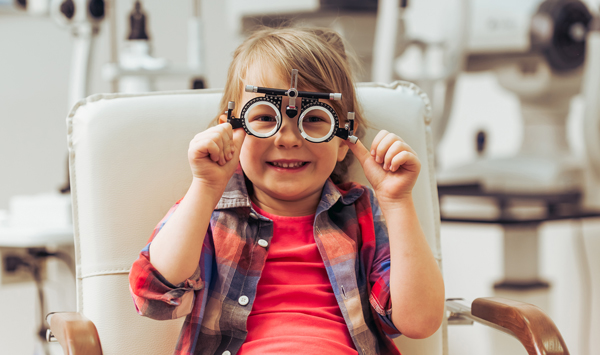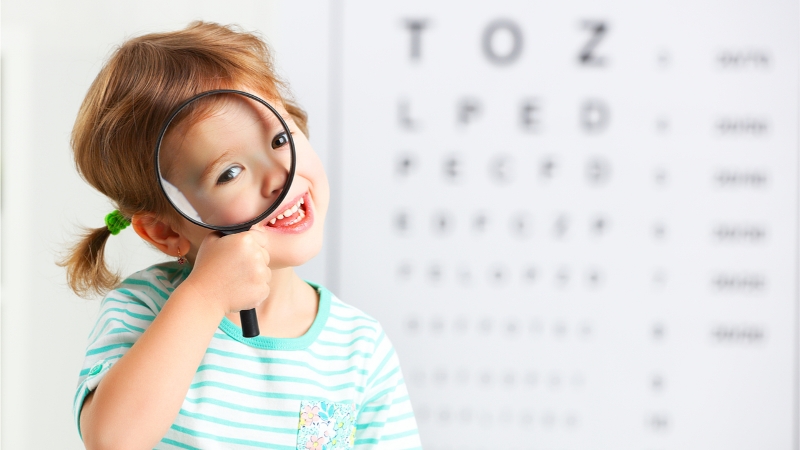

Pediatric ophthalmology
Children are not just small adults. They cannot always say what is bothering them. They cannot always answer medical questions, and are not always able to be patient and cooperative during a medical examination. Pediatric ophthalmologists know how to examine and treat children in a way that makes them relaxed and cooperative. In addition, pediatric ophthalmologists use equipment specially designed for children. Most pediatric ophthalmologists’ offices are arranged and decorated with children in mind. This includes the examination rooms and waiting rooms, which may have toys, videos, and reading materials for children. This helps create a comfortable and nonthreatening environment for your child.
What is a Pediatric Ophthalmologist?
If your child has an eye problem, is having difficulty with a vision screening exam or has difficulty reading or learning, or needs surgery or medical treatment for an illness affecting the eyes, a pediatric ophthalmologist has the experience and qualifications to treat your child.
What Conditions Does a Pediatric Ophthalmologist Treat?
Pediatric ophthalmologists treat children with serious eye injuries or infections. They provide ongoing care for kids with eye problems that result from diseases like juvenile arthritis or Type 1 diabetes. Some common disorders they diagnose and treat include:
- Pediatric cataracts
- Strabismus (crossed or wandering eyes)
- Amblyopia (lazy eye)
- Blocked tear ducts
Reasons to See a Pediatric Ophthalmologist
Your child’s pediatrician or family doctor screens their vision during regular checkups. If they or you notice a problem with your child’s eyes, they may refer you to a pediatric ophthalmologist. Signs that a child may have an eye problem include:
- Sensitivity to light
- Crossed or wandering eyes
- Persistent pus or crust, redness, or watery eyes
- Frequently rubbing their eyes
- Squinting
- Tilting their head to see
What types of examinations do pediatric ophthalmologists perform?
- Vision assessment: Particular skills are needed to test a child’s eyesight, especially in the pre-school child. Different methods are used for different ages.
- Determination of refractive error (the need for and strength of glasses): This testing is performed after dilation in most pediatric patients to ascertain an objective measurement.
- Motility examinations: Quantitative measurements of ocular misalignment are necessary for planning medical and surgical management of strabismus.
- Biomicroscopy and dilated fundus examinations: These are necessary to investigate for the presence of eye disease associated with systemic diseases such as diabetes, juvenile idiopathic arthritis, genetic abnormalities, neurologic pathology (increased intracranial pressure), as well as specific ocular conditions such as cataracts and glaucoma.
- Examination under anesthesia (EUA): This may be necessary to diagnose and/or treat conditions in patients who will not allow adequate examination/treatment in the office.
What kinds of treatments do pediatric ophthalmologists provide?
Medical treatments:
- Prescriptions for glasses and/or contact lenses.
- Amblyopia (“lazy eye”) therapy including glasses, patching and pharmacologic treatment.
- Topical and or/systemic therapy for eye infections, chalazia, glaucoma, blocked tear ducts, and inflammation on the eye or in the eye. Medicines include antibiotics, antivirals and steroids.
Surgical Procedures:
- Probe and irrigation for congenital nasolacrimal duct obstruction (blocked tear duct).
- Excision of chalazia.
- Eye muscle surgery for strabismus.
- Pediatric cataract extraction including use of intraocular lenses (IOLs).



.png)

